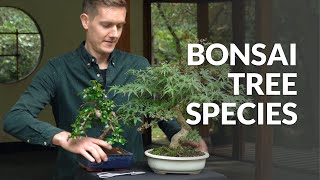Liquidambar Bonsai Care guidelines
The tree prefers a position in full sun with good humidity. During the hottest weeks of summer it is advisable to provide some shade over midday and early afternoon. Liquidambar species should be protected from strong frost and harsh winds when they are planted in bonsai containers.
The liquidambar bonsai tree should be watered thoroughly as soon as the soil starts to get dry. It prefers slightly acidic pH values of 6 to 6.5, so if your tap or well water is too alkaline, try to use rain water or mix both, checking the pH value. Continue reading about watering Bonsai trees.
Watering
Free lecture from the Beginners CourseUse a solid organic fertilizer every month and / or a balanced liquid fertilizer once a week during the growing season.
Larger or thicker branches are best pruned after the shoots have emerged in spring. Pruning during dormancy can cause dieback of branches and poor wound healing. A wound sealant should be used to cover the cut wounds. Let the shoots grow 10 to 15 cm and then cut them back to one or two leaves. As the apex tends to grow particularly strongly, make sure to trim the top growth attentively, in order to let the weaker lower branches catch up.
Twigs and new shoots can be wired in June and July to improve the lines of the ramification. Guy wires are also a good option for shaping. The old wood is stiff and hard to bend. Continue reading about pruning Bonsai trees.
Amber trees should be repotted every two or three years in early spring while still dormant, with normal to heavy root-pruning. The roots tend to grow vigorously. Older and larger specimen can be repotted in longer intervals. Use a well-draining standard soil mixture with a neutral or slightly acidic pH-value. Continue reading about repotting Bonsai trees.
Liquidambar can be propagated from seed, root cuttings or root suckers. Air-layering is also possible.
The liquidambar bonsai tree is normally a very healthy tree, as long as placement and care are adequate. Weak trees, however, can be attacked by American plum borer, Asian oak weevil, tent caterpillars, fall webworm, walnut scale, bleeding necrosis or leaf-spot fungus. Use a specific pesticide or ask a professional gardener for help in difficult cases, and try to improve the tree's living conditions. For more detailed information on these techniques, check out our Bonsai tree care section.

Liquidambar, or Sweet gum Bonsai
General information about the Liquidambar Bonsai tree
The leaves grow alternating and their palmate shape resembles maple leaves with three, five or seven lobes and serrated edges. The autumn colours range from yellow and orange to bright red and purple. The trunk has a greyish-brown bark which becomes deeply furrowed with age. Liquidambar species are monoecious, they produce both male and female flowers on each individual tree. The spiky globose fruit clusters contain many woody capsule fruits, each with a lot of seeds, many of which are sterile, small, and irregularly angular. The much larger, fertile seeds are ellipsoid and have membranous wings. Amber trees are valuable forest trees and are also often planted as ornamental plants. They are very resistant to heat and drought and can also tolerate short-term, massive flooding. Liquidambar species are frost-hardy, but they need some frost-protection when they are planted in bonsai containers.
If you need help identifying your tree, take a look at our Bonsai tree identification guide.





